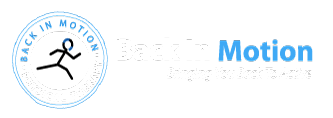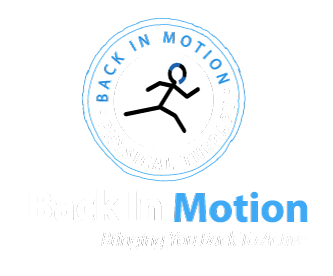Millions of Americans have suffered from a rotator cuff tear. A rotator cuff tear is a common cause of shoulder pain. It may be one of the most common sources of moderate to intense shoulder pain. But what actually happens in the case of a rotator cuff tear? What are the options for treating the injury and decreasing pain?
The Rotator Cuff & Shoulder Pain Demystified

Above you can see the anatomy of the shoulder complex. The four muscles indicated are the four muscles that combine to form the tendon attachment around the shoulder known as the rotator cuff. Each of these muscles can contribute to shoulder pain. Each of theses muscles has a separate action in moving the shoulder:
The Supraspinatous raises the arm out to the side (to a certain degree), straight out from the shoulder.
The Infraspinatous and Teres Minor rotate the arm externally (away from the mid-line).
Subscapularis rotates the arm internally (toward the mid-line of the body).
As these muscles attach to the bone through their tendons, these tendons create a “cuff” of connective tissue around the joint. It is this tendonous cuff that can tear and contribute to shoulder pain.
How a Rotator Cuff Tear Happens

A tear occurs in the rotator cuff when one of these muscle’s tendon is torn, whether partial or total. This can happen a number of different ways, through various movements of the shoulder. Often times, weakness and or inflexibility of one of these muscles leads to the tearing of the muscle’s tendon. Unfortunately, because we do not often strengthen these muscles specifically, strains occur frequently in the general population.
Tears can happen as a result of trauma, as in a fall or impact. Tears can also occur after long term overuse or misuse. The different causes of tearing create different types of pain. Often traumatic tears create intense, acute pain and instant weakness. Slowly developed tears produce more mild, annoying pain with specific movement, progressive weakness and inflexibility. These lead to consistent pain while at rest that doesn’t go away with medication.
The tear, depending on the degree, will cause pain, inflammation, nerve/tissue impingement, impaired range of motion, and continued weakness and instability. For more on rotator cuff tears, click here. Staying educated is an important part on the road to health.
Could You Have a Rotator Cuff Injury?
Rotator Cuff Tears are associated with the following symptoms. If you are experiencing any of these symptoms, you may want to talk to your doctor about your shoulder issues and starting physical therapy.
- Pain in the affected shoulder while resting, or sleeping at night, especially if lying on that affected side.
- Pain in raising the arm and in bringing it down, with exacerbated pain with particular movements
- Weakness in the shoulder upon rotating (turning in or out) and raising the arm
- Snapping, creaking, cracking, or crackling feeling when moving the shoulder specifically
- *Symptom list credited to OrthoInfo.aaos.org*
What Should You Do Next?
Continuing to use the arm with a rotator cuff tear as normal, without seeking help could make the tear larger over time. This will worsen the problem and prolong the pain. Seek help first from the doctor to have your shoulder problem diagnosed; this is important in knowing how to proceed. Depending on the severity of the tear, certain stretching and strengthening routines combined with rest could be enough to encourage proper healing and pain relief. The next step would be Physical Therapy to specifically aid in the reduction of pain and inflammation, strengthen and stretch the surrounding muscles, and gain education on proper body mechanics. Removing added pressure or strain on the joint will help allow it to heal on its own. If the injury isn’t addressed promptly, or if the other interventions aren’t successful, surgery may be required. It is always best to avoid invasive and surgical intervention if it can be helped. It may seem like a serious issue, but the solution may be simple.
Some Things to Help in the Meantime
Here are some ways to lessen your rotator cuff pain while seeking help from a doctor or physical therapist. (Always make sure the following suggestions align with your current therapy program.)
- Get plenty of sleep: Resting the body at night, getting a good 8 hours a night, can help in the healing process.
- Drink more water: Keeping hydrated while recovering from an injury and participating in a new exercise program (maybe from a physical therapist) is hugely important for tissue healing and proper functioning of the muscle.
- Do some gentle stretches: Depending on which tendon was torn or which muscle of the rotator cuff was affected, your doctor or PT will assign special stretching protocols specific to your particular case. However, one beneficial stretch you can do to open the chest and release some pressure in the shoulder. This will target the pectoralis major and minor. If these muscles are tight they can pull the shoulder forward and affect the way the shoulder functions, sometimes creating more pain at the joint. A chest stretch in the doorway is demonstrated below.
-
- Bring the arm to the door frame with the elbow bent to 90 degrees. Try to get the elbow even with the shoulder (it may not get there just yet). Breathe here and feel the stretch already

Next, slowly and carefully take a step through the door, leading with the chest. Breathe here for 20-30 seconds. Repeat 2x *You can also slightly turn the body away from the shoulder and open up even more. Go slowly and if there is pain, back off!
These pointers will help you in your recovery from a rotator cuff tear. If you are suffering with a rotator cuff tear and need help, check out our Rotator Cuff Program Page. We are dedicated to helping you get Back In Motion, so allow us to help you on your way.
Contact Us to Set Up an Appointment and Beat Your Rotator Cuff Tear!
-Written by Becca Chamberlain, LMT, RYT



0 comments